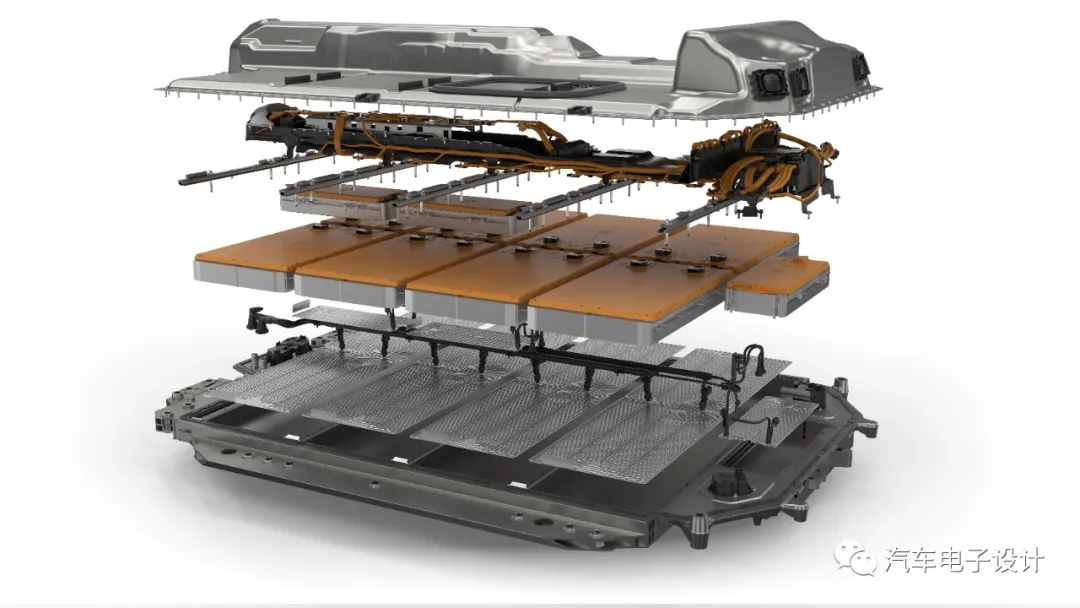Yesterday, BMW unveiled the features of the iX4 and i4. These two cars will also be globally available for delivery starting from November, considering the current competitive landscape. It is worth noting that the iX’s price is still very attractive: the iX xDrive40 (240 kW&76.6 kWh) starts at €77,300, while the iX xDrive50 (385 kW&111.5 kWh) starts at €98,000. The i4 also has two variants, the i4 eDrive 40 (250 kW) and the i4xDrive 50, both with a battery capacity of 83.9 kWh. There are many aspects to talk about regarding these two cars, but let’s start with the battery systems.
Battery System Structure
Let’s first take a look at the battery system of the i4. Its overall design and layout are almost identical to that of the iX3. After the battery is made of narrow-width cells, it is divided into 8 dual-row large modules. In order to ensure capacity, 3 small modules are placed in the second layer and top areas. From the perspective of the i4 battery, the height of the battery pack in the passenger area is reduced to a minimum (110mm) by placing high-voltage harnesses, raised modules, and electrical components in the central channel and rear seats. According to the calculations shown later, it is not clear about the modules of i4. We need to wait for detailed information to be released later. According to the subsequent charging information, it is highly conceivable that there are differences in the formula of the two types of batteries used in i4 and iX. i4 focuses on fast-charging power, while iX focuses on energy to increase mileage.
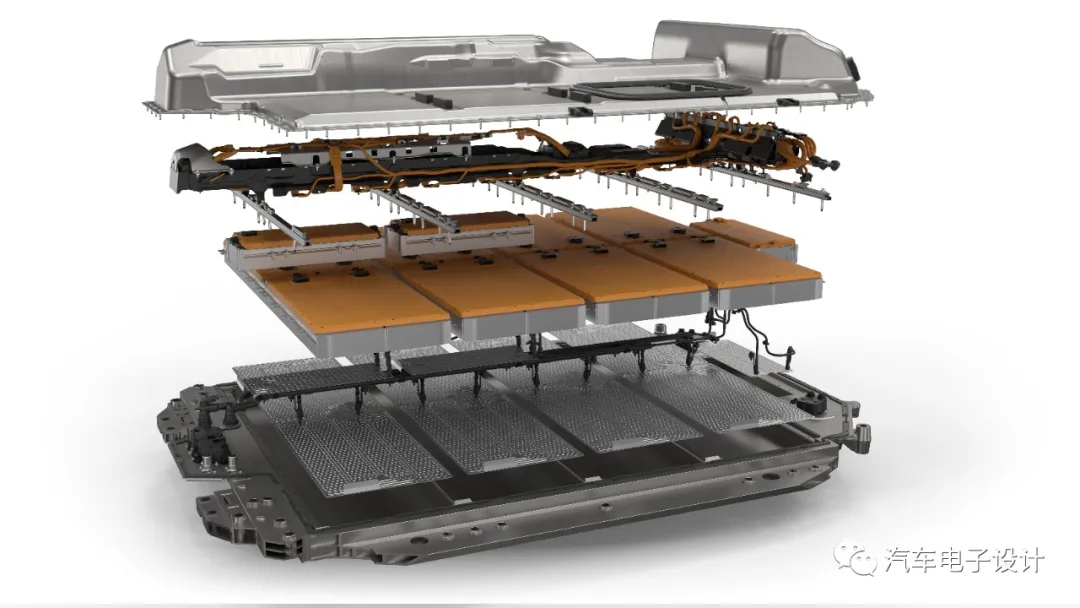
As shown in the following figure, BMW adopts a low-height design method to control the part of the battery height that affects the vehicle within 110mm. Due to this, the assembly of the battery system is relatively challenging.
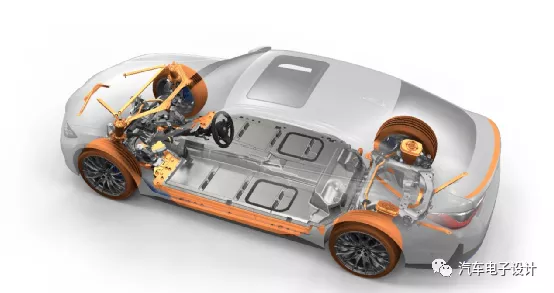
This may be more comfortable for viewing the iX module, as it adopts 11 large modules. The figure below shows the structure of a dual-row module, and the original concept of the initial design based on 148-wide cell dual-row module design in China may come from this. According to calculations, one module is 11kwh.
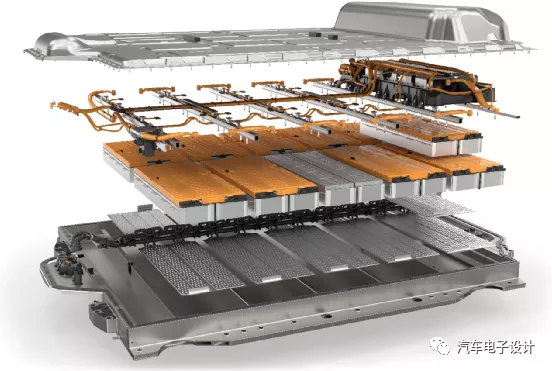 Count carefully, there are 50 battery cells in one module, divided into 2 rows and 25 columns. That is to say, each battery cell is 201Wh (estimated as 56Ah based on 3.61V), and since 800V is not mentioned here, it is calculated based on 400V, which is a strange way of connecting 5 cells in parallel with 110 cells in series (5P110S). BMW has put a lot of effort into designing this module.
Count carefully, there are 50 battery cells in one module, divided into 2 rows and 25 columns. That is to say, each battery cell is 201Wh (estimated as 56Ah based on 3.61V), and since 800V is not mentioned here, it is calculated based on 400V, which is a strange way of connecting 5 cells in parallel with 110 cells in series (5P110S). BMW has put a lot of effort into designing this module.
Note: After seeing this package, you can understand why BMW’s engineers are willing to try cylindrical battery cells. Of course, for smaller battery packs like the 76.6kWh pack, which may use a 4P95S configuration and then reduce the voltage, it is estimated to have 380 battery cells, with a system voltage of 343V.
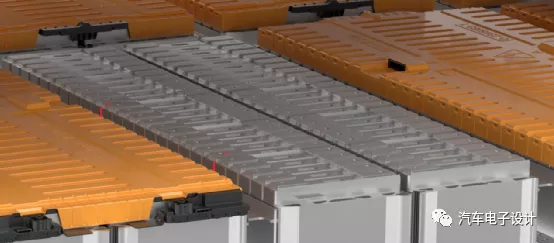
Fast Charging Speeds of i4 and iX
There are differences in the fast charging speed of the three batteries, as shown below:
For iX xDrive50, the peak charging power of the 111.5 kWh battery is 195 kW, and the battery cells have been adjusted for energy.
For iX xDrive40, the peak power of the 76.6 kWh battery is 156 kW, approximately 80% of the former. I understand that this is due to the difference between 4P and 5P.
The peak charging power of BMW i4’s 83.9 kWh battery is 210 kW.
This large battery has a charging power of 175 kW at a very low SOC, and increases to 195 kW at around 35% SOC. The power is reduced to about 160 kW from 35% to 50% SOC, and then steadily decreases. The charging power at 80% SOC is slightly higher than 90 kW. In terms of charging time, it takes about 35 minutes from 10% to 80%, corresponding to an average charging power of 126 kW, and it should be possible to charge 150 kilometers in 10 minutes.
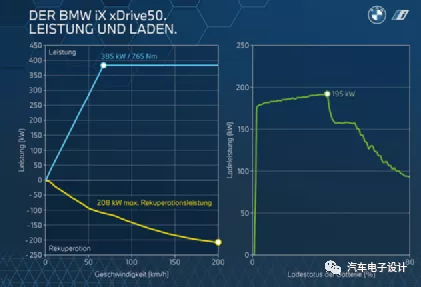
The low configuration battery is basically similar to the iX3. The charging power is 150 kW at 20% SOC and is reduced to 140 kW after 40% SOC. Then, it starts to decrease in steps, and the charging power is 50 kW at 80% SOC. The time required for charging from 10% to 80% is 31 minutes, and the corresponding average charging power is 96 kW.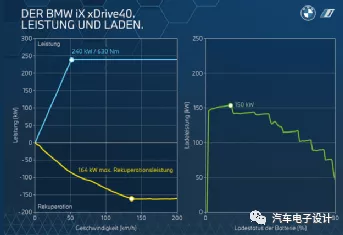
This battery is really fast. We can see that the power quickly increases to 200kW at a very low state of charge (SOC), reaching 210kW even in the 30% range, and then drops to 150kW at SOC 40%, 100kW at 60%, and about 60 kW at 80%. It takes 31 minutes to charge this battery from 10% to 80% (these three cars have different charging curves, I don’t know how they configure these strange curves), corresponding to an average charging power of 110 kW.
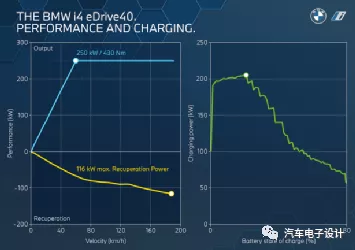
Summary
Of course, these battery systems all have cooling systems similar to those of the iX3. On the 400V system, everyone is trying to achieve a power of 210kW with a corresponding current of more than 500A. We should still attach great importance to the increase in fast charging power. Both 800V and 400V systems should support fast charging.
This article is a translation by ChatGPT of a Chinese report from 42HOW. If you have any questions about it, please email bd@42how.com.
